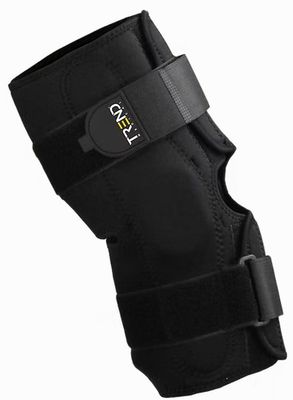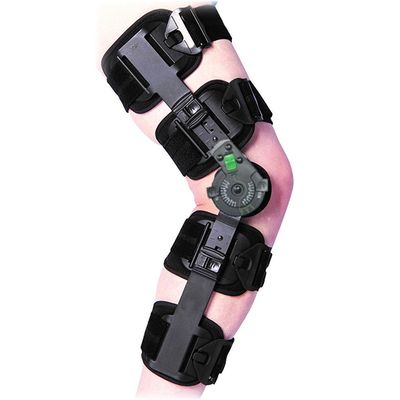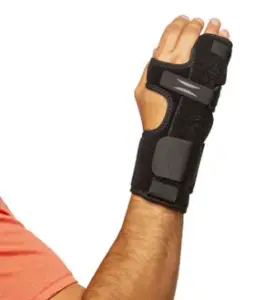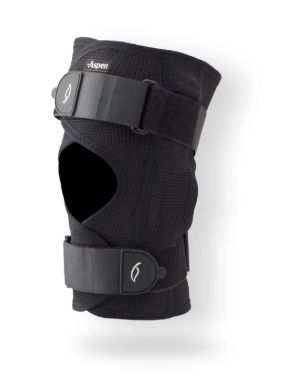Ankle-foot Orthotic
Foot drop orthotics are specialized devices designed to assist individuals with foot drop, a condition where the front part of the foot cannot be lifted, leading to difficulty walking and an increased risk of tripping or falling. These orthotic devices help support the foot and ankle to promote proper gait and improve mobility.
What is Foot Drop?
Foot drop is often caused by weakness, paralysis, or damage to the muscles responsible for lifting the foot (dorsiflexion). It can result from conditions such as:
- Nerve injuries (especially to the peroneal nerve)
- Neurological disorders (e.g., multiple sclerosis, cerebral palsy)
- Stroke
- Muscle disorders (e.g., muscular dystrophy)
- Spinal cord injuries
Types of Foot Drop Orthotics
Ankle Foot Orthosis (AFO)
- The most common type of orthotic for foot drop.
- Supports the ankle and foot, keeping the foot in a neutral position to prevent it from dragging.
- Can be made from rigid materials like plastic for maximum stability or more flexible materials like carbon fiber for dynamic support.
- Available in different styles, such as rigid, hinged, and posterior leaf spring AFOs, each offering various levels of movement and support.
Functional Electrical Stimulation (FES) Devices
- Use electrical impulses to stimulate the nerves and muscles responsible for lifting the foot.
- Helps achieve a more natural walking pattern.
- Often used in conjunction with physical therapy to improve long-term mobility.
Foot-Up Devices
- A lightweight and less bulky option compared to traditional AFOs.
- Consists of an elastic band or strap attached to the shoe, which lifts the foot when walking.
- Provides support without fully restricting ankle movement.
Toe-Off Braces
- Made of lightweight carbon fiber.
- Offer a balance of flexibility and support, allowing for a more natural gait.
- Suitable for active individuals who need durable support.
Benefits of Foot Drop Orthotics
- Improved Gait: Helps restore a more natural walking pattern by lifting the foot during the swing phase of walking.
- Increased Stability: Reduces the risk of tripping and falling by preventing the foot from dragging.
- Enhanced Mobility: Allows individuals to walk longer distances and engage in daily activities more comfortably.
- Support and Alignment: Provides the necessary support to keep the ankle and foot in proper alignment, reducing strain on other parts of the body.
Considerations When Using Foot Drop Orthotics
- Consult a healthcare professional to ensure the orthotic is properly fitted and suited to the individual’s condition.
- Wearing Schedule: Gradually increase the time spent wearing the orthotic to allow the body to adjust.
- Comfort and Fit: Ensure that the device does not cause skin irritation, pressure sores, or discomfort. Regular adjustments may be necessary for optimal fit.
- Complementary Therapies: Combining orthotic use with physical therapy exercises can help strengthen muscles and improve overall mobility.
Foot drop orthotics can make a significant difference in the quality of life for individuals affected by this condition by offering support, stability, and enhanced freedom of movement.
Aspen ROM Knee L1832 and L1833
Aspen ROM Knee Brace – Long Description & Functionality
The Aspen ROM (Range of Motion) Knee Brace is a state-of-the-art orthopedic device designed to deliver precise control over knee joint movement while offering exceptional comfort, compression, and stability. Engineered for patients recovering from surgery, injury, or managing chronic instability, the Aspen ROM Knee helps facilitate safe rehabilitation by allowing controlled, incremental movement of the knee joint.
With HCPCS codes L1832 and L1833 approved, this brace is recognized for its therapeutic benefits and qualifies for insurance reimbursement under those categories, depending on its specific features.
Functional Overview
- Controlled Range of Motion (ROM):
At the core of the Aspen ROM Knee Brace is its adjustable, polycentric hinge system, which allows clinicians or patients to precisely set flexion and extension limits. This is critical for post-operative rehabilitation, as it helps prevent re-injury while promoting safe mobility. The hinge settings typically range in increments of 10°–15°, allowing for progressive increase or restriction of motion based on the patient’s recovery phase. - Optimal Compression and Support:
The brace features a compression sleeve or wrap system, designed to provide consistent, circumferential pressure around the knee. This not only stabilizes the joint but also reduces swelling, improves proprioception, and supports soft tissue healing. The rigid frame construction further ensures lateral and medial stability, protecting injured ligaments such as the ACL, PCL, MCL, and LCL. - Post-Operative and Injury Rehabilitation:
The Aspen ROM Knee is frequently prescribed for:- ACL or PCL reconstruction
- Meniscal repair
- Collateral ligament injuries
- Fracture stabilization
- General ligamentous instability
- Controlled mobilization after knee surgery
- Adjustability and Custom Fit:
The brace includes adjustable straps and cushioned contact points, enabling a snug fit tailored to the patient’s anatomy. Its intuitive design allows for quick donning and doffing, even for individuals with limited mobility. The telescoping uprights (in some versions) can accommodate varying leg lengths and swelling throughout recovery. - Comfort-Focused Design:
Aspen integrates its well-known focus on patient comfort into this brace with padded liners, breathable materials, and a lightweight frame. These features help prevent skin irritation and make the brace more tolerable during prolonged use, which is especially important during post-operative recovery.
Reimbursement & HCPCS Coding
- HCPCS Code L1832: Knee orthosis, adjustable knee joints (unicentric or polycentric), positional orthosis, rigid support, prefabricated, includes fitting and adjustment.
- HCPCS Code L1833: Same as L1832, but with inflatable air support.
The Aspen ROM Knee is generally coded under L1832 unless it includes an inflatable pneumatic system designed to deliver adjustable air compression, in which case L1833 is applicable.
These codes are Medicare and private insurance-approved and are used to identify prefabricated hinged knee braces that offer significant medial-lateral and anteroposterior support, especially when adjustable ROM settings are included.
Documentation Tip: For billing purposes, be sure to document:
- The medical necessity for a ROM control knee orthosis
- The patient's diagnosis and post-operative condition
- Specific limitations in range of motion or instability
- Provider notes regarding brace fitting and adjustment
Conclusion
The Aspen ROM Knee Brace is a clinically proven, insurance-reimbursable solution for knee stabilization and rehabilitation. Combining rigid structural support with customizable motion control and compression, this brace meets the needs of post-surgical patients and individuals recovering from complex ligament injuries. Its design promotes recovery while ensuring patient comfort, making it a trusted choice for orthopedic specialists, surgeons, and physical therapists.



Knuckle Orthosis: Purpose, Benefits, and Applications
Knuckle Orthosis Knuckle Orthosis: Purpose, Benefits, and Applications A Knuckle Orthosis is a specialized medical device designed to provide stability, support, and protection to the metacarpophalangeal (MCP) joints—the knuckles of the hand. These orthotic devices are commonly used in the… Continue Reading…

Wrist and Hand Braces: Support, Relief, and Rehabilitation for Hand and Wrist Conditions
Wrist and Hand Braces Introduction Wrist and hand braces are essential tools for individuals managing pain, recovering from injuries, or dealing with chronic conditions such as carpal tunnel syndrome, arthritis, or tendonitis. These braces provide stability, compression, and support to… Continue Reading…

Orthopedic Shoulder Braces: Support for Shoulder Injuries and Chronic Conditions
Orthopedic Shoulder Braces Introduction Orthopedic shoulder braces are designed to provide support and stabilization for individuals recovering from shoulder injuries, managing chronic shoulder pain, or undergoing post-surgical rehabilitation. These braces help alleviate discomfort, protect the shoulder joint, and prevent further… Continue Reading…



